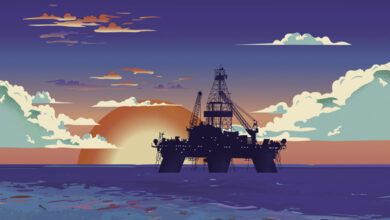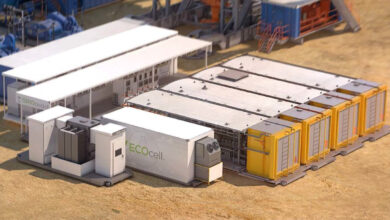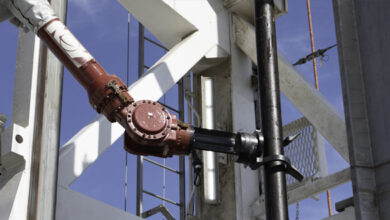North Sea industry learning to live in world of $60 oil
Concerted effort focused on ensuring that costs in this mature region remain sustainably lower even when oil prices increase again
By Alex Endress, Editorial Coordinator
- Exploration and appraisal drilling has fallen to a 40-year-low in the UK this year but is expected to remain more stable in Norway.
- Short one- to two-well rig contracts persist, requiring contractors to stay agile in response to new projects and locations.
- Statoil is starting to deploy tailor-built Cat D semis and Cat J jackups for simultaneous drilling and production operations.
For drilling contractors, some are working with operators to deliver new rig designs specifically targeting the less-explored northern North Sea, including the UK’s West of Shetland area, as well as the Norwegian Continental Shelf (NCS). However, innovation can be difficult to take on when short one- to two-well contracts with dayrates that barely cover operational expenses have become the norm.
“Hopefully, we’re taking steps to reduce costs that will be sustainable in the future,” said Kjetil Gjersdal, Odfjell Drilling’s Executive Vice President for Mobile Offshore Drilling Units. “If business returns more gradually, then we will be in a much better position to control costs and keep them down. If we enter into a new boom period with fast growth, we have to be very careful not to repeat history.”
The good news is that the North Sea appears to remain an important piece of the long-term global energy picture for operators, despite the region’s high costs. BP, for example, has more than 20 producing fields in the North Sea, with an estimated 3 billion barrels of recoverable resources. “BP is in the middle of a five-year, £7 billion investment program in the North Sea, including major projects in the central North Sea and Shetland area,” Scott Dean, BP Deputy Head of Group Press Office, stated.
Earlier this year, the company increased its interest in the UK’s Culzean development in the central North Sea from 16% to 32%. Culzean, which is operated by Maersk Oil, is estimated to supply 5% of the total UK demand when it reaches peak production in 2020-2021, according to Mr Dean. Further, BP is continuing long-term investments in West of Shetland projects Clair Ridge and Quad 204. The company estimates an additional 8 billion barrels of oil in place when considering future drilling plans for such developments.
BP is also applying lessons learned from other world markets to improve the economic viability of North Sea projects. For example, the operator was able to work with suppliers on costs and designs to reduce the price of Mad Dog Phase 2 in the US Gulf of Mexico from $20 billion to less than $10 billion, he said. Lessons from projects like this must be used to make adjustments in the North Sea to make it viable in the long term.
Lower costs to realize potential
As low oil prices continue to plague the high-cost North Sea drilling market, exploration and appraisal (E&A) drilling in the UK North Sea has fallen to a 40-year-low, according to industry analysts Hannon Westwood. For 2016, only 12 E&A wells are projected for the UK North Sea. “But there is still drive to find ways to incentivize more drilling in the region. The industry, as well as the UK government, still believes the UK Continental Shelf (UKCS) is underexplored.” Mr Nottage estimates there could be approximately 20 billion barrels of oil equivalent (BOE) left to recover from the UKCS, citing Oil & Gas UK’s Activity Survey 2016.
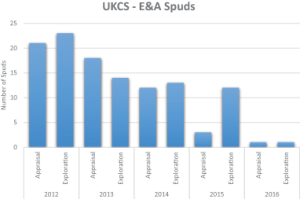
Although the central North Sea has historically been the main producing area for the UK, the majority of recent discoveries of significant size have come from the West of Shetland area. While production from this harsh-environment area accounted for only 2.8% of the UK’s total offshore production in 2015, that number is expected to rise to 20% by 2020, according to the Oil & Gas UK survey. “There are potentially large reserves in the West of Shetland area, but of course, it’s been slower to grow because there are major drilling and development challenges in deep waters up 5,320 ft with harsh weather conditions.”
Costs are already being brought down in this region, however. Whereas West of Shetland wells have historically cost upwards of $100 million each, a well could be drilled there for $45 million to $70 million in the current market, Mr Nottage estimated. “All operators and their partners in the West of Shetland, including drilling contractors and service providers, are engaged in major efforts to reduce the cost of drilling and development.” Still, he believes that oil prices need to reach at least a stable $60/bbl before operators will begin to increase activity in the area.
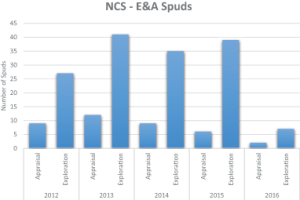
Indeed, the whole of the North Sea E&P industry has been working over the past two years to “learn to live in a world of $60 oil,” Mr Nottage said. “Whatever the price is, you should still live like it was $60 per barrel. You don’t let costs go crazy when oil prices go up because of a higher revenue stream. You just make a better return.” Oil and Gas UK has been a major driver in this industrywide push, he noted. “This is the most concerted effort I’ve seen across the board to make this business survivable, because everybody believes that it’s too early to turn the lights off.”
According to the Activity Survey 2016, average costs of production in the UK North Sea, including West of Shetland, have come down from $30/bbl in 2015 to just over $20/bbl in 2016, with the intent to further reduce average costs down to $15/bbl. So far, most cost reductions have resulted from improving operational efficiency, renegotiating contracts and eliminating discretionary spending, according to the survey. However, Mr Nottage pointed out, it will take significant discipline by the industry to ensure these cost reductions remain sustainable even when oil prices recover.
For its part, the UK government is doing what it can to help the oil and gas industry, motivated by its desire to maintain this valuable employment and tax revenue source. In March, the UK government announced new tax cuts for E&P companies in the 2016 Budget. The Supplementary Charge Tax (SCT) was reduced from 20% to 10%, backdated to January 2016. On top of that, the Petroleum Revenue Tax (PRT) on all profits from oil extraction was eliminated, after it had previously been reduced from 50% to 35% last year. As a result, the overall tax on operators has been reduced from 67.5% to 40%, which includes the 30% standard corporation tax on all oil companies.
Such tax cuts are good news for the industry, but they are unlikely to impact activity levels in the short term. Of the 130 E&P companies currently active on the UKCS, Mr Nottage estimates that approximately 50 have no current production or reserves in development in the UK. “You need to be a taxpayer for tax allowances to be important to you. If you’re not liable to pay taxes because you’re not producing anything, it doesn’t matter whether or not you receive tax allowances,” Mr Nottage said.
Looking at the longer term, he continued, the tax cuts are also the UK government’s attempts to delay field and infrastructure decommissioning in the region – at least an estimated $50 billion business for the service sector over the next 20 to 25 years. “If you’ve got an oilfield and you can’t run that profitably pretax, then there will be pressure to abandon,” he said. “The minute a field goes cash negative, you’re into the period where you have to do something to make it profitable again, or that day of judgment will come.”
Once critical infrastructure, such as pipelines and platforms, are decommissioned, it is unlikely the industry will invest in similar infrastructure in this mature basin ever again. “If you don’t act while you still have the infrastructure, it may be impossible to go and get it back,” Mr Nottage said. “To keep the UK going, you need the critical infrastructure to survive in workable order.”
Over in the Norwegian market, E&A drilling is expected to decrease, with only 32 E&A wells projected for 2016 versus 45 drilled in 2015, according to Hannon Westwood. “Norwegian operators are struggling with the same cost problems faced in the UK but to a lesser extent,” Hannon Westwood Technical Analyst Matthias Sasso said. He cited Norway’s 78% tax rebate on exploration wells as a major incentive that will potentially keep this market stronger than the UK.
The Norwegian North Sea sector is also approximately 15 years younger than its UK counterpart and perceived as having more remaining resources for extraction, he said. “All the more robust prospects in the UK seem to have been worked, whereas Norway is more immature, and there are bigger and better prospects to go for,” Mr Sasso said. “In Norway, there has been some fluctuation in exploration due to the downturn but not to the same extent as across the median line.”
The more important issue is the government’s dependence on oil and gas revenues, which account for roughly 25% of the country’s GDP. However, Norway’s $830 billion Government Pension Fund has accrued taxes from Norwegian oil profits since 1990. That will be enough to cushion the impact of low oil prices on the government’s budget for at least the next five years, Mr Sasso said. “To a large extent, it is very much business as usual right now in Norway.”
In the Danish North Sea, production drilling activity appears to have remained consistent despite the downturn, and workovers and plug and abandonment operations are actually expected to slightly increase this year. “In general, it’s our impression that over the last couple of years, the operators have had a strong focus on workover of economical wells and plug and abandonment of non-economical wells,” said Katrine Krone, Head of Division for the Offshore Safety Unit at the Danish Working Environment Authority (DWEA). DWEA expects 20 workover and plug and abandonment operations in 2016 – four more than last year. By year-end, the DWEA expects 13 new production wells drilled – the same number as in 2015.
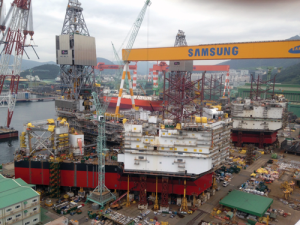
While two E&A wells were drilled in 2015, no wells have been announced for 2016, according to DWEA. “This picture could relate to the prolonged low oil prices,” Ms Krone said. There are currently seven drilling rigs working for E&P companies in the Danish North Sea, as well as two accommodation rigs. However, the DWEA said it expects up to four drilling rigs to leave Denmark by year-end and two new rigs serving as accommodation vessels to enter Denmark this year.
The European Union’s Offshore Safety Directive, under which EU requires countries to create their own regulation for independent verification of well activities, will go into effect for Denmark in July. “The Danish regulation is based on a risk assessment done by the operator. If there is a risk for unplanned release of substances and materials, the activities must be approved by the DWEA,” Ms Krone said. “If the risk assessment indicates there is no risk for unplanned release of substances and materials, the DWEA only has to be notified about the well activity.”
Ms Krone said the DWEA recently established a working group with regional operators, Maersk Drilling, the Danish Metalworkers’ Union and the Danish Engineers’ Association to make sure the industry perspective is understood and conveyed within the Danish regulation. “We want to make sure we don’t make rules that won’t work in real life, so we’ve had a constant dialogue for quite some time,” she said. “Our goal is to do this as smoothly as possibly so that operators don’t have to knock on too many doors to get the approval to drill. On the other hand, we expect to receive a complete application.” The framework for the Danish regulation was based on the UK model, she added.
When the regulation goes into effect for Denmark this summer, the DWEA will take the role of the safety authority for well activities from the Danish Energy Agency. “The DWEA will focus primarily on the major hazard risks but also on the top management commitment to safety, especially on the coordination of the operators and rig owners’ management systems,” Ms Krone said. “As a Danish safety regulator, I expect the prolonged low oil price to have absolutely no negative influence on the level of safety. Furthermore, I expect the requirement for an independent verification to improve the safety level of well activities here even more than it is currently.”
North Sea-tailored rigs

To improve economic recovery in mature fields in the northern North Sea, Statoil is deploying semisubmersibles and jackups – called Cat D and Cat J rigs, respectively – that have been tailor-built for simultaneous drilling and production operations in harsh environments. Since December 2015, three Cat D semis have been put to work on the Norwegian Continental Shelf (NCS) with one more on the way, and one Cat J jackup is scheduled to start operating for the UK Mariner Project later this year.
“We have a lot of older fields, and much of our future activity will be completion and intervention activities in these fields, with more production drilling than exploration,” Geir Ove Eikill, Statoil Vice President of Mobile Newbuilds, said. For 2016, Statoil is planning only roughly 20 exploration wells, including partner-operated wells. The vast majority of Statoil’s 112 total planned wells this year will be production wells.
Statoil began developing the concepts for the Cat D’s in 2009 and for the Cat J’s in 2010 after recognizing a need for rigs that could drill production wells more efficiently in the mid- and shallow-water segments of the Norwegian North Sea. Most of the existing rigs in the region at the time were 30 to 40 years old, and few newbuilds were being undertaken for this specific market with the specific capabilities that Statoil was seeking. “What we saw was that the industry was focusing on the ultra-deepwater market. New rigs coming out of the yards were targeting calmer waters and warmer climate conditions, such as Brazil, West Africa and the Gulf of Mexico,” Mr Eikill said.

Input from numerous companies throughout the supply chain was collected during the rigs’ design and engineering phases. “We had a lot of drilling contractors joining us. We had all the major equipment suppliers joining us, and we tried to bring the best in the industry together,” Mr Eikill said.
The process began with the recognition that “we needed tailor-made concepts for efficient year-around production drilling operations in these waters,” he continued. Using standard semisubmersibles or jackups in the Norwegian North Sea, operators may spend up to 20% of rig time on mobilization and demobilization of production drilling equipment. There can also be significant waiting-on-weather time due to poor motion characteristics while operating during the harsh winter season on the NCS.
“A design for the North Sea winter operations should have a higher air gap between sea level and the rig in order to prevent excessive slamming loads caused by high waves coming in from the Atlantic Ocean,” Mr Eikill explained.
Both the Cat D’s and Cat J’s were designed with sheltered work areas to protect rig crews from winter temperatures. Both rig designs also incorporate dual-activity features for simultaneous operations on the drill floor and in the moonpool. The Cat J rigs are also designed with multifunctional BOP riser tension systems that allow for both surface and subsea BOP operations. “Normally we can only do subsea operations with semisubmersible units, but now we can be more efficient with jackups in shallow water. The jackup concept is relatively more efficient in shallow waters because it does not have to ride the harsh waves like a semisubmersible,” Mr Eikill said. The Cat J jackups can operate in waters depths from 70-140 m and can drill to a maximum depth of 10,000 m.
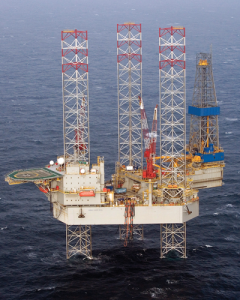
Construction contracts for the four Cat D rigs were awarded from 2011-2012 to Songa Offshore. These semis are designed to operate in up to 1,300 m of water and can drill to a maximum of 8,500 m. From December 2015 to April 2016, three Cat D rigs started eight-year contracts with Statoil in the Norwegian North Sea, with dayrates ranging from $446,000-$490,000. The fourth – the Songa Enabler – is on schedule to begin its eight-year contract with Statoil at a dayrate of $450,000 in Q3 2016, operating in the Barents Sea. All four of these contracts carry options for four extensions by three years each.
In late June, the first Cat J jackup – the Noble Lloyd Noble – is planned to leave Sembcorp Marine’s Jurong Shipyard in Singapore for Statoil’s Mariner field in the UK. The rig is expected to commence its four-year contract, worth a total of $596 million, this autumn. Two other Cat J rigs – the Askepott and Askeladden – remain under construction at Samsung Heavy Industries in South Korea. Unlike the Noble Lloyd Noble, these two jackups will be owned by the licensees operated by Statoil but managed by KCA Deutag.
Mr Eikill noted that the licensees decided to keep ownership of these rigs because they’re intended for long-term work on the Gullfaks and Oseberg fields. “If we have a very long contractual need for the rig… then there is an opportunity to get the cost down if you are owning the asset yourself,” he explained.
The Askepott and Askeladden will mobilize to the Gullfaks and Oseberg licenses in mid-2017 for two eight-year contracts, worth a combined $900 million. Like the Cat D contracts, these two Cat J contracts also carry options for four extensions by three years each, giving the rigs the opportunity to stay on the same fields for a total of 20 years. Despite current low oil prices, Mr Eikill said, he expects all of these long-term contracts to pay off. “We made these decisions when the oil price was $110-120 per barrel, and it’s a much tougher business case for these projects today. But these are long-term commitments, and we have to look a bit further ahead to see the value.”
Endurance through low dayrates
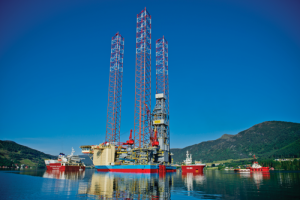
As modest oil prices continue to limit operators’ drilling budgets, drilling contractors in the North Sea remain plagued by low rig demand. In the midst of the difficult offshore environment, Noble Corp is improving its competitive position with the addition of the Noble Lloyd Noble, a Cat J-design jackup that targets operations in the North Sea. As of early June, construction of the rig was nearing completion. Operations on Statoil’s Mariner Field, on the East Shetland Platform in the UK North Sea, is expected to commence in Q4. “The Noble Lloyd Noble is a great example of how Noble works with a customer, such as Statoil, to identify effective solutions for a challenging field development program,” said Jeff Chastain, Vice President of Investor Relations for Noble Drilling.
“Due to its mature status, much of the offshore drilling fleet that operates in the North Sea continues to be the more standard designs that have been in service for 30-plus years, especially among the floating rigs and many of the jackups operating in the southern gas basin,” he continued. The Lloyd Noble is the world’s largest jackup design, according to Noble, with a maximum water depth of approximately 500 ft and 700 ft of leg length providing a 250-ft air gap. Since the rig will operate year-round in the northern North Sea, a location historically addressed by semisubmersible designs, the Lloyd Noble’s extreme size is necessary for the rig to address the design dimensions of the Mariner platform and to manage the environmental challenges of the region, including wind and wave forces.
In addition to its size, the Lloyd Noble was designed with a hookload of 2,000 kips, a cantilever envelope of 110-ft x 74-ft, a drilling depth of 32,000 ft and quarters for up to 140 personnel.
Aside from the Lloyd Noble, the company has three high-specification jackups located in the North Sea – one in the UK and two in Denmark. However, like other rig contractors, Noble is fighting to keep its rigs working. “There are not as many contracts being signed today because the operators have materially reduced their rig needs. Therefore, competition for the limited opportunities can be fierce,” Mr Chastain said. Dayrates are down by 60% in some cases, he added.
For example, Shell recently agreed to an up to two-year contract extension for the Noble Hans Deul jackup at $88,600/day in the UK North Sea. That compares with $235,000 for the rig’s previous dayrate with Shell that ends in August. “Clearly, the dayrates across the fleet have followed the decline in utilization levels, whether you’re talking about floating rigs or shallow-water rigs,” he said. “We recognize that the market is going through a downturn. Exactly how long that lasts is tough to call at this stage, but during this period we are very much focused on maintaining utilization, especially among our most modern, sophisticated rigs.”
The Noble Sam Turner jackup is also beginning a two-year contract extension with Maersk Oil this summer at a sharply reduced dayrate in the Danish North Sea. The rig will be contracted at $96,500/day, down from its previous contract with Maersk at $197,000/day. “Given the current supply imbalance, dayrates could continue to decline for a period of time and could, in some cases, approach the cost of running the rigs,” Mr Chastain said. Daily operation of these jackups before field support can range from between $50,000-65,000, he noted. “Depending on the asset, you’re still probably better off following a strategy of keeping the rig utilized, if possible, due to the complex set of instrumentation found on the modern rigs.”
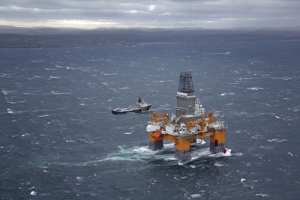
Modern rigs possess an abundance of electronic circuitry installed on drilling equipment that can digitally connect to rig control systems, and it is especially important to keep these rig systems active. The Hans Deul and Sam Turner, which were added to the Noble fleet in 2009 and 2014, respectively, are examples of modern jackups possessing these advanced systems and capabilities. “The industry is faced with the idling of a growing number of modern, sophisticated rigs, and how these systems respond following a long idle period is somewhat unknown. We know these rigs must be preserved properly if you are to limit the capital outlay required once reactivation is appropriate,” Mr Chastain said.
The Noble Regina Allen, a jackup built in 2013, is currently the company’s only available North Sea rig. It has been warm-stacked in Denmark since December 2015. “We continue to see some opportunities for the rig, and as long as you have these opportunities, you want to maintain a higher state of readiness to respond to the client’s program timing and have the rig on location,” Mr Chastain said. “We’re cautiously optimistic that the industry will need rigs such as the Regina Allen working in the North Sea in the near- to intermediate-term.”
Shorter contracts becoming the norm
With the outlook on oil prices remaining muted, North Sea operators are cautiously proceeding with much shorter-term rig contracts than what were offered when oil prices were around $100/bbl. “Activity has been dropping significantly in the North Sea. We used to see rig contracts extending out to five years for development campaigns or even exploration campaigns, but today, we see operators drilling just one or two wells here and there, and the lead times are also extremely short,” said Michael Reimer Mortensen, Maersk Drilling Head of Global Sales. Faced with much smaller budgets, operators are taking action only on the most economically viable prospects in their global portfolio, he said.
Maersk Drilling currently has 100% utilization for its 12 North Sea rigs – seven jackups in Norway and five jackups in Denmark. However, five of these rigs will roll off contract by year-end, and one more will become available by January 2017. “It’s an interesting time,” Mr Mortensen said. “I think our rigs coming off contract will find more short-term work, and that will require us to be more agile as an organization as lead time will also be short.”
In February, Statoil canceled the remaining portion of its two-year contract with the Maersk Gallant jackup. However, a new contract was then signed with Total E&P Norge. Although contractors would prefer having short-term contracts to no work at all, these short contract lengths do make it harder for contractors to help operators increase overall efficiencies and bring down total well costs.
“By mobilizing your whole team and putting all your planning into a one-well contract, you are not able to apply the lessons learned from a long-term campaign – doing repetitive business to drive down costs,” Mr Mortensen said. “Hopefully, at some point in time, we might return to having longer-term engagement and longer contracts in the industry because that’s really when you can benefit from working together. However, in this environment, strong delivery from day one is essential to improve well economics and, thus, stimulate further activity.”
Maersk Drilling does have two jackups that are set to begin five-year drilling contracts within the next 12 months. One is the contractor’s single newbuild under construction – the XL Enhanced 4, which was ordered back in 2013. Under construction in South Korea, the rig is scheduled for delivery in 2017 and will be working for BP in Norway. “Aside from providing better visibility, these types of (long-term) contracts allow you to engage closely with the operator to optimize planning,” Mr Mortensen said. “We’ll be able to really optimize planning to adapt and apply lessons learned from drilling one well after the other.” The jackup will be able to operate in maximum water depths of 492 ft and can drill to a maximum depth of 40,000 ft.
In May, the company also acquired a newbuild harsh-environment jackup, the Hercules Highlander, from Hercules Offshore. The rig will be delivered from the Jurong Shipyard in Singapore this summer and mobilized to the UK North Sea to begin a contract worth approximately $420 million with Maersk Oil, as well as partners BP and JX Nippon E&P, on the Culzean gas field in September. The jackup can operate in up to 400 ft of water and can drill to a maximum 30,000 ft. It will enter the company’s fleet as the Maersk Highlander.
“This agreement represents an opportunity for Maersk Drilling to acquire a newbuild harsh-environment jackup backed by a long-term contract,” Maersk Drilling CEO and Maersk Group Executive Board member Claus V. Hemmingsen, who served as 2009 IADC Chairman, said in May after the rig was acquired.
Maersk Drilling has also implemented a cost transformation program that has already helped to reduce total operating costs companywide by 12%. To further reduce costs, the contractor is looking at ways to further bring down daily operational costs and to optimize yard space where rigs are stacked.
Further, Maersk Drilling said it is focused on making cost-conscious stacking decisions. Although the company does not have any stacked rigs in the North Sea, it does have two semis and one jackup stacked in other parts of the world. All three rigs have been warm-stacked to avoid costly reactivations, Mr Mortensen said. “We will try to avoid cold-stacking because we perceive the reactivation cost of bringing a rig back into operation to be relatively high. But if the market gets even worse, which is very hard to predict, then we may also have to take these discussions into consideration in the future.”
Maersk Drilling’s cost transformation program has no predetermined end date, he added, calling it a “new way of working” to make sure the company stays cost-disciplined. “Going forward, I think this is how the industry should be. Let’s plan for the oil price we see today to be the oil price we see tomorrow, and in that way, prepare ourselves and the industry to be able to explore and produce oil over the next many years.”
Semis in West of Shetland, Norway
While demand for rigs in the North Sea has waned due to low oil prices worldwide, Odfjell Drilling has been able to keep rigs on contract by focusing on the company’s core harsh-environment semisubmersibles. “There is no less of a downturn in the North Sea than there is globally. That being said, there have been more opportunities for rigs set up for harsh environments here over the last year,” Mr Kjetil Gjersdal said. All four of the drilling contractor’s North Sea semisubmersibles are currently utilized, with two working in the UK’s West of Shetland region and two in the Norwegian North Sea. “We see that there are fewer companies with harsh-environment fleets that are competing for the same jobs as us, compared to deepwater jobs worldwide.”
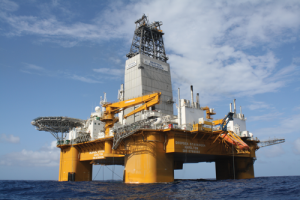
Semisubmersibles that operate in the West of Shetland or Norway require specialized capabilities, such as longer columns for higher air gaps, enclosures to protect workers during winter weather and wind shielding. Odfjell’s three latest North Sea rigs include these features, as well as dual active heave compensating drawworks. The technology can work to counteract semisubmersible heave for up to 20 ft to reduce impact on the drill bit and allow the BOP stack to be landed more efficiently, according to Odfjell.
“This compensating system allows us to operate far beyond the borders normally established for semis,” Stein Harald Nielsen, Odfjell Drilling Rig Manager for Deepsea Aberdeen said. “On a conventional rig’s compensating system, you’d have to stop at about 4 meters heave when drilling.”
Even though Odfjell has been able to keep its semis working, the company says it has seen downward pressure on dayrates as all other contractors have. In some cases, Odfjell has also had to find short-term contracts for its rigs between longer contracts. In January, JX Nippon agreed to a $275,000/day contract for the Deepsea Stavanger to drill one exploration well in 700 m of water in the West of Shetland. Operations began in Q2 and are expected to wrap up later this year. Afterward, the rig will mobilize to Norway to begin a six-well contract with Wintershall Norge at a $305,000 dayrate. After the six wells are complete, there are options to drill three more wells at a $365,000 dayrate. The Deepsea Stavanger can operate in water depths up to 10,000 ft and can drill to a maximum depth of 37,500 ft.
“Most contracts awarded these days will only cover the operating costs,” Mr Gjersdal said. “The alternative is to stack the rig, and then you don’t have any income at all. It’s much better to keep the rig warm and active than to stack it and have to pay the maintenance costs. Of course, we can also keep up the competency of the crew in the process.” When possible, he added, the company will veer toward long-term contracts at acceptable rates to ensure predictability.
The company’s other West of Shetland rig, the Deepsea Aberdeen, which was built in 2014, started on a $450,000/day contract in April 2015 with BP that goes out to 2022. It is currently Odfjell’s longest North Sea contract. “It might be the most important contract we have in the company these days,” Mr Nielsen said, citing the length of the agreement. The rig is drilling wells on the Schiehallion and Loyal fields for BP’s Quad 204 project – an estimated 450 million barrels of oil equivalent (BOE) development.
In the Norwegian North Sea, the Deepsea Atlantic and Deepsea Bergen are both working under three-year contracts with Statoil. The Deepsea Atlantic, delivered in 2009, is drilling production wells on the Johan Sverdrup field. Its current contract is worth an initial $330 million until Q1 2019, with an option to extend operations to Q4 2020, which could increase the value to $470 million. The Johan Sverdrup is estimated to hold up to 3 billion BOE. Meanwhile, the Deepsea Bergen, which was delivered in 1983, is drilling production wells in the Halten Nordland area. On top of the rig’s initial three-year, $382 million deal, there are options to extend operations until mid-2018, which would increase the contract value to $619 million.
“We have worked hard and were very fortunate to get these jobs because, at the end of the day, there aren’t very many of the long-term jobs that everybody is looking for at the moment,” Mr Gjersdal said. “We believe the contracts were awarded us due to the fact that we can provide state-of-the-art sixth-generation harsh-environment semis combined with a competent and dedicated organization that knows the North Sea well.” DC
- For 2016, only 12 exploration and appraisal wells are projected for the UK North Sea, which would be a 40-year-low in this market.
- In the Norwegian North Sea, 32 E&A wells are expected in 2016 versus 45 E&A wells drilled in 2015.
- While 2 E&A wells were drilled in Denmark in 2015, none have been announced for this year.
- The share of the UK’s total offshore production from the West of Shetland region is expected to rise from 2.8% in 2015 to 20% by 2020.
- Norway’s $830 billion Government Pension Fund has accrued taxes from Norwegian oil profits since 1990, and the fund’s size is expected to be large enough to cushion the impact of low oil prices on the government’s budget for at least the next 5 years.


